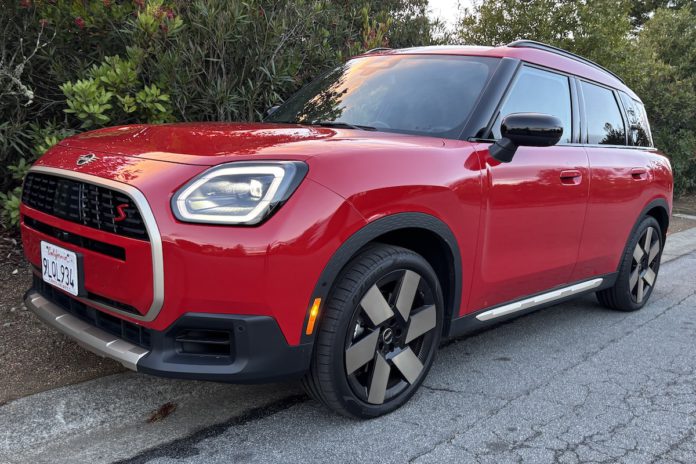This is not a theoretical question I pose. This month’s car (actually, two 2025 Mini Countryman models that pose the same question) is the “big” Mini, if you’ll pardon the oxymoron. It answers the question—what would a Mini be if BMW turned it into an all-wheel drive (AWD) SUV.
Mini is a classic British car marque going back to 1959, but it has been owned by BMW for almost 25 years. The Minis of the BMW era are small, but not as diminutive as the original model. BMW has also been producing an SUV model, the Countryman, for 15 years, so this question is not new. It’s being answered in the affirmative by more than a third of Mini buyers, who choose the Countryman over the alternative models—two-door, four-door or convertible.
I will affirm that the two Countryman models I drove carried forward the Mini tradition well, in spite of the real question about how they fit into the Mini tradition. Over the years Minis have been made into many different types of non-small versions; the only difference is this is one you can buy with a warranty.
If we’ve settled the questions of origin and size, let’s look at what the biggest Mini brings to the party. We’ll compare the base model Countryman S ALL4 with the JCW (for John Cooper Works) Countryman ALL4.
A Mini SUV
The Countryman is a small SUV. For comparison, BMW’s smallest SUV, the X1, is about the same length, but eight inches taller. It doesn’t feel small because you sit fairly high and the car’s design gives a spacious interior. The Mini design aesthetic is to push the wheels out to the corners of the car, maximizing interior space. The rear seats fold, and the carrying capacity of the Countryman is impressive for its size. If you’re carrying humans, three can fit in the back, although two would be more comfortable for extended trips.
The power for the Countryman comes from its new land of origin—it’s a turbocharged 2-liter four-cylinder engine cranking out 241 horsepower in the S model and 312 in the JCW. Torque remains the same in the two models, so off-the-line performance is comparable—and quite good. Also borrowed from BMW is the seven-speed dual-clutch transmission, which delivers smooth shifting and the option to imitate manual shifting with paddle shifters in the JCW version. No manual is available.
Fuel economy in the Countryman is about what you would expect for this size vehicle—24 mpg city/32 highway/26 combined in the base model and one or two mpg less in the JCW. If those numbers are an issue, but the Countryman still gets your juices going, check out the electric model that’s also available.
JCW’s racing heritage also shows up in the suspension, which is tweaked to adapt to more aggressive driving. Both models handled well—a Mini hallmark.
The cabin of both models is dominated by a feature taken from the original Mini, but supersized—the 9.4-inch circular display. It does a good job of giving you the information you need about the car’s speed and can augment that with navigation or entertainment data.
Finally, we have one other element that is not “mini”—the price. Anyone familiar with the Mini knows it’s positioned as a premium car. The Countryman starts with a base price of $38,900, but it’s easy to add on packages with convenience and functionality that bump the price up. Our S checked out at $44,295 while the JCW was just below $52,000. The package delivers substantial value because, for all the BMW pieces, it is a Mini and performs like the big brother to the sedan. A Mini at heart.




